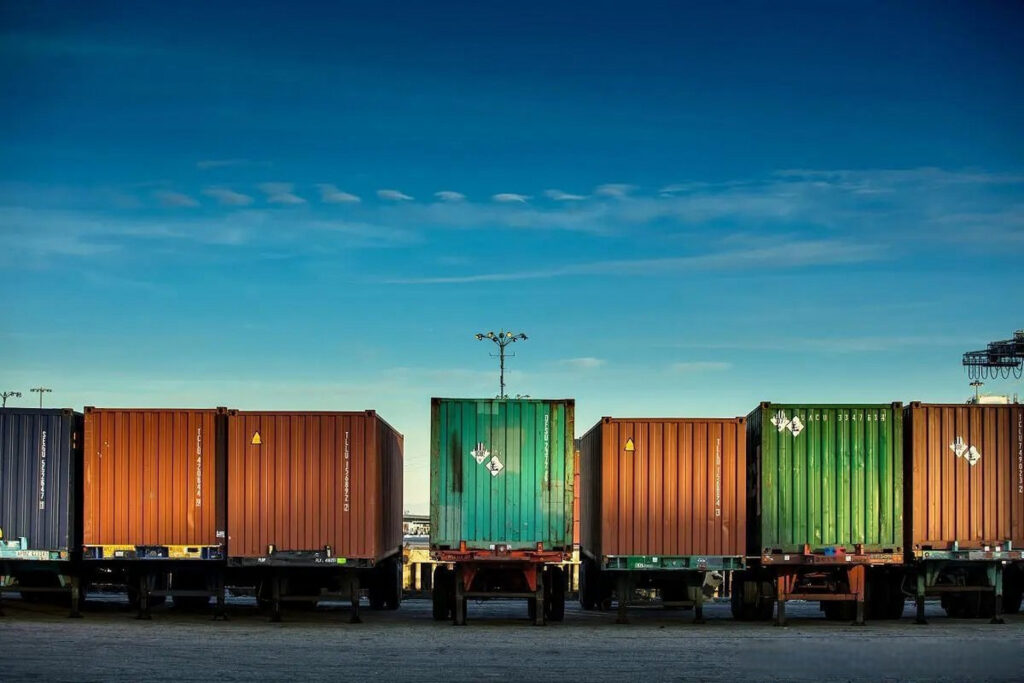- By TOP CHINA FREIGHT
- July 30, 2025
- Shipping
Shipping containers are essential for transporting goods across oceans, land, and rail. Among the most commonly used are the 20-foot and 40-foot containers. Whether you’re importing machinery, consumer goods, or raw materials, understanding the weight, capacity, and internal dimensions of these containers is crucial for logistics planning and avoiding penalties.

20ft vs 40ft Shipping Containers: Quick Comparison
| Feature | 20ft Standard Container | 40ft Standard Container |
|---|---|---|
| Tare Weight (Empty) | ~2,300 kg (5,071 lbs) | ~3,750 kg (8,268 lbs) |
| Max Gross Weight | 30,480 kg (67,200 lbs) | 30,480 kg (67,200 lbs) |
| Max Payload | ~28,180 kg (62,128 lbs) | ~26,730 kg (58,932 lbs) |
| Interior Volume | ~33.2 m³ (1,170 ft³) | ~67.6 m³ (2,385 ft³) |
| Pallet Capacity | 10 standard pallets (single stack) | 20–22 standard pallets (single stack) |
Key Takeaway: A 40ft container offers double the volume of a 20ft but not double the weight capacity, which is why shippers choose based on the nature (bulk vs weight) of their cargo.
Internal Dimensions (from Freightos)
| Measurement | 20ft Standard | 40ft Standard | 40ft High Cube |
|---|---|---|---|
| Interior Length | 5.9 m (19’ 4”) | 12.03 m (39’ 6”) | 12.03 m (39’ 6”) |
| Interior Width | 2.35 m (7’ 8.5”) | 2.35 m (7’ 8.5”) | 2.35 m (7’ 8.5”) |
| Interior Height | 2.39 m (7’ 10”) | 2.39 m (7’ 10”) | 2.69 m (8’ 10”) |
| Door Opening Height | 2.28 m (7’ 6”) | 2.28 m (7’ 6”) | 2.58 m (8’ 6”) |
How to Ship a 20ft or 40ft Container
Shipping full-size containers, whether 20ft or 40ft, involves several coordinated steps. Here’s a simplified overview of the process, as explained by Freightos:
1. Choose Full Container Load (FCL) or Less than Container Load (LCL)
2. Get a Freight Quote
Use online freight marketplaces like Freightos or contact a freight forwarder to get shipping costs based on:
- Container size (20ft or 40ft)
- Port-to-port or door-to-door service
- Cargo type, weight, and volume
- Destination country and import duties
3. Book the Shipment
- Choose your incoterms (EXW, FOB, CIF, etc.)
- Confirm pickup date, loading location, and transit time.
- Provide documents: commercial invoice, packing list, and shipping instructions.
4. Pack and Load the Container
- Ensure cargo is packed securely with proper bracing.
- Use pallets to ease loading and unloading.
- For 20ft containers, weight density matters (ideal for heavy cargo).
- For 40ft containers, consider volume efficiency (ideal for bulky goods).
5. Container Pick-Up & Port Delivery
- The container is trucked to your warehouse or factory.
- After loading, it’s sealed and transported to the port.
6. Customs Clearance & Ocean Freight
- Submit customs documentation.
- Pay duties, taxes, and any applicable fees.
- Container is loaded on a vessel and shipped to the destination port.
7. Arrival & Final Delivery
- On arrival, the container clears customs.
- It’s then delivered to the consignee’s warehouse or facility via truck or rail.
Why Container Weight Matters
Freight charges are based on weight or volume, depending on which is higher. Overloading a container can lead to penalties or cargo rejection.
Trucks and railcars must stay within legal axle load limits. Overweight containers may need special permits or handling.
Proper load distribution prevents cargo damage, shifting during transit, and accidents during lifting and unloading.
Common Uses of Each Container Size
| 20ft Container | 40ft Container |
|---|---|
| Ideal for heavy goods | Ideal for large-volume shipments |
| Better for weight efficiency | Better for space efficiency |
| Examples: machinery, metals | Examples: furniture, electronics |
How Many Pallets Fit?
| Pallet Type | 20ft Container | 40ft Container |
|---|---|---|
| Standard Pallet (1.2m x 1m) | ~10 | ~20–22 |
| Euro Pallet (1.2m x 0.8m) | ~11 | ~25 |
Note: Figures depend on pallet configuration and loading method.
Final Thoughts
Both 20ft and 40ft shipping containers are critical to international trade. A 20ft container is more suitable for dense, heavy cargo, while a 40ft container offers more volume for bulkier goods. Knowing their weights, dimensions, and how to ship them ensures smooth logistics operations and cost control.
For accurate quotes and up-to-date information, consult a freight forwarder.
Need a Shipping Quote?
Click below to get a free, no-obligation quote from TJ China Freight.
We’ll respond within 24 hours with the best shipping options for your cargo.
FAQ:
Q1: Can a 20ft container carry more weight than a 40ft?
Yes. Due to its smaller size, a 20ft container has a higher weight-to-space ratio, making it ideal for heavy goods.
Q2: Is FCL cheaper than LCL?
FCL is usually cheaper per unit when your shipment fills most of the container. LCL is cost-effective for small shipments.
Q3:How long does it take to ship a 40ft container from China to the US or Europe?
Transit time varies by route:
- China to US (West Coast): 12–20 days
- China to Europe: 30–40 days
